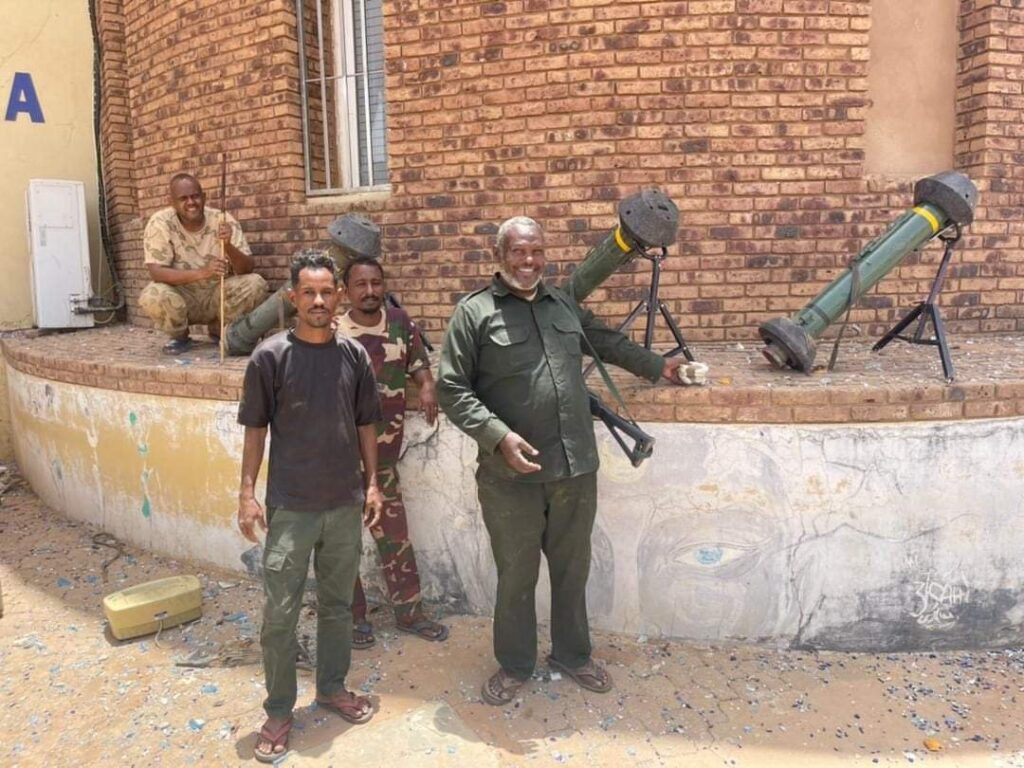ADF STAFF
Images recently published online reveal that both sides in Sudan’s yearlong conflict have armed their fighters with Iranian anti-tank missiles.
The exact source of the Saeghe anti-tank guided missile system (ATGMS) remains unclear. Sudan’s state-owned weapons maker manufactured the systems for many years, leading some analysts to speculate that — in the case of the Rapid Support Forces (RSF) — the weapons may have been looted from captured military bases.
Sudanese Armed Forces (SAF) leaders have denied receiving weapons from Iran, but refused to say where they came from.
Sudan renewed its ties with Iran in October 2023 after a seven-year hiatus. In December 2023, a Sudanese delegation visited Iran on a mission to acquire Iranian Mohajer-6 attack drones.
In 2024, those drones entered the Sudanese battlefield. Photographic evidence published by Radio Dabanga and other sources showed Iranian Revolutionary Guard cargo planes on the tarmac in Port Sudan, the base of operation for Sudan’s government led by Gen. Abdel Fattah al-Burhan.
Since renewing diplomatic ties, Sudan has granted Iranian Navy vessels access to Sudanese ports, giving Iran a limited Red Sea presence. Sudan has not yet allowed Iran to establish a permanent naval base despite requests, according to published reports.
Iran likely is to persist in its aid to Sudan in a way that could have a significant impact beyond Sudan’s domestic conflict, according to analyst Mehmet Kilic.
“The revitalization of its ties with Iran holds the potential to impact not only the region but also the global balance of power,” Kilic wrote recently in the Middle East Monitor.
The presence of Iranian weapons in Sudan has drawn the attention of Iran’s regional rivals, including the United Arab Emirates, which backs the RSF.
Iran has dispatched Saeghe missiles to other conflict zones where it seeks influence, most notably Yemen.
The anti-tank missiles are just part of Sudan’s arsenal of Iranian-made weapons. The SAF fields an array of drones, firearms and armored vehicles either made by Iran or based on Iranian designs, thanks to a long history of military cooperation between the two countries.
Over the course of decades, Iran supplied the SAF with military training and helped Sudan buy Chinese military planes. The SAF used Iranian aircraft during the prolonged conflict with the portion of the country that eventually became South Sudan.
Since January, the SAF has used its Iranian-supplied drones to retake territory lost to the RSF. That includes large parts of Omdurman, Sudan’s second most-populous city and part of the three-city capital complex that includes Khartoum and the industrial city of Khartoum North. Khartoum remains largely under the RSF’s control.
Mohajer-6 drone attacks have helped the SAF regain ground elsewhere by driving RSF fighters from key areas.
Observers say the flood of Iranian weapons into Sudan is part of Iran’s broader goal of establishing a foothold in Africa and the Red Sea — likely at the expense of Sudan.
“By establishing a presence in a nation traditionally aligned with Saudi Arabia, Iran stands to bolster its influence significantly,” Kilic wrote. “As the conflict within the country persists, Iran’s presence is poised to increase it further.”

